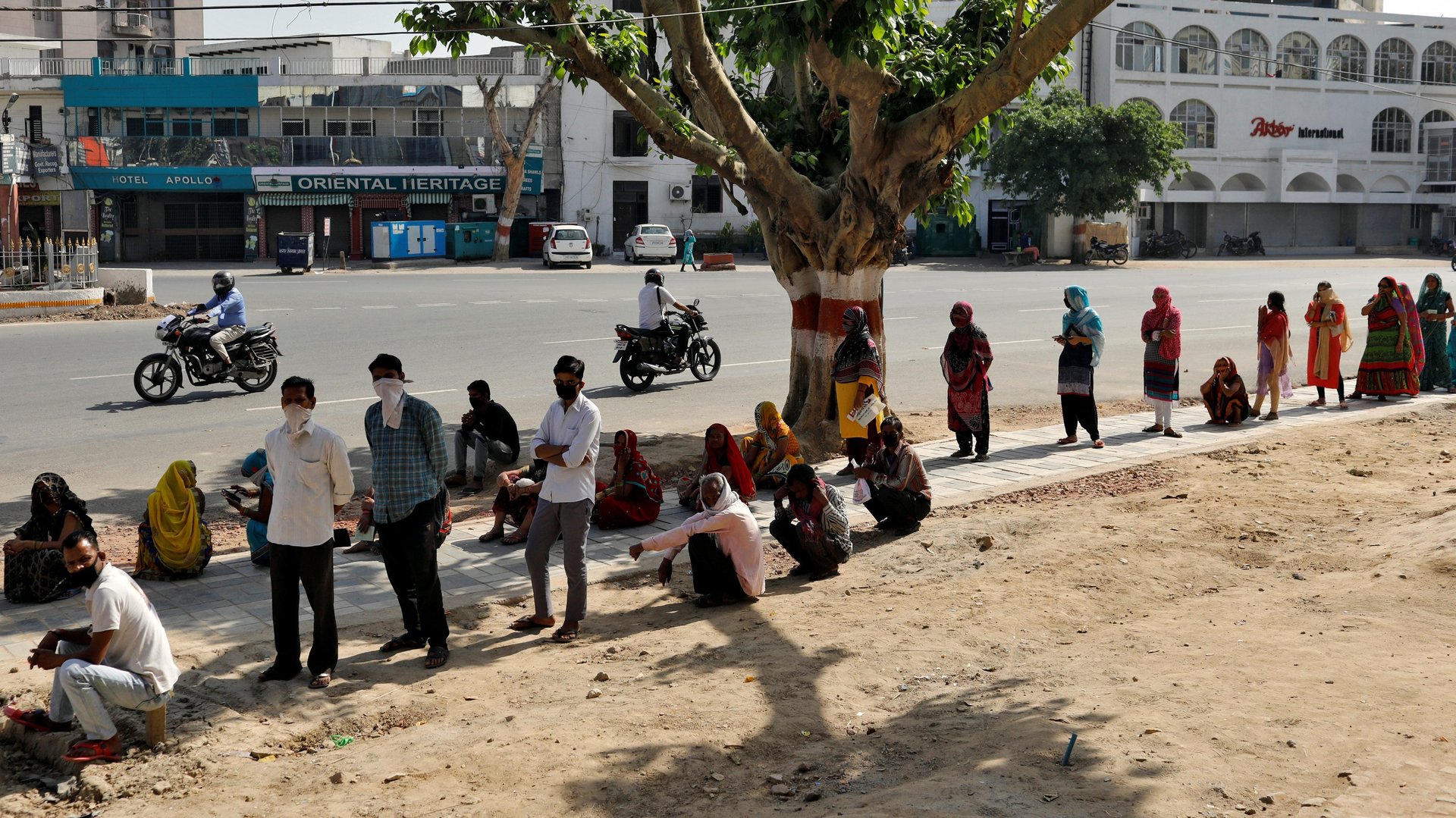In a coronavirus-struck world, India and China alone may escape a recession this year
The Indian economy, which was already in the midst of a major slowdown, is now facing a severe deceleration due to the Covid-19 pandemic.


The Indian economy, which was already in the midst of a major slowdown, is now facing a severe deceleration due to the Covid-19 pandemic.
This has prompted unprecedented firefighting measures from the country’s central bank.
On March 27, the Reserve Bank of India (RBI) cut the repo rate, at which it lends to commercial banks, to 4.4%. It also reduced the reserve repo rate, at which banks lend to the RBI, by 90 basis points to 4%, in a bid to create liquidity for businesses.
Yet, for those expecting these measures to spur a quick recovery, former RBI director Vipin Malik has a word of caution. “They (the steps taken by the government and the central bank) would go some way in reviving the economy and bringing back (investor and consumer) confidence, but it may not be enough and the economy may need other booster shots,” said Malik.
In an interview with Quartz, Malik discussed India’s GDP and inflation forecasts, problems faced by the banking sector and what more needs to be done to kickstart an economic revival in the country.
Edited excerpts:
RBI governor Shaktikanta Das has stated that India’s GDP would bounce back to 7.4% in financial year 2022. Is it realistic?
While GDP growth will be in the range of 1.5-3% in financial year 2021, there is a clear possibility of a strong rebound next financial year. I would place it at 6.5%.
Are there signs of a 2008-like recession globally and a severe slowdown in India?
Recession is a word, which is loosely, and wrongly, used as a synonym for slowdown. Technically, a recession is defined as two consecutive quarters of negative GDP growth. While most countries are likely to go into recession, India and China are expected to record positive growth (this financial year).

Given the gravity of the crisis and its crippling impact, a cut in India’s GDP projection by global agencies does not cause much surprise. Micro, small & medium enterprises (MSMEs) and services segments are likely to be among the most affected amid a reduction in consumer spending. Also, borrowers of non-banking finance companies (NBFCs) would be adversely impacted. They typically have limited cash buffers, and any fall in earnings is likely to affect their ability to repay loans.
With a severe slowdown inevitable, are the government and RBI’s stimulus packages enough to revive the economy and bring back confidence?
The increased liquidity, coupled with a cut in the reverse repo rate, will incentivise banks to actively lend to those who are in need of funds. It will also make borrowing affordable for businesses. It is a good policy and would go some way in nudging banks to move away from what (former RBI deputy governor) Rakesh Mohan characterised as “lazy banking.”
At the same time, some distressed segments and market players expected much more from the RBI. As a Hindi film punch line has it “yeh dil maange more” (this heart yearns for more, much more). The economy may need other booster shots. At the same time, we have to be conscious of the fiscal and other constraints of the government.
What more steps should the government and RBI take to boost the economy?
After the lockdown ends, banks should be allowed to convert working capital credit of industries into loans of three to five years, to be paid in equal instalments.
Sectors like travel, hotel, entertainment, restaurants, agriculture, and retail are specialised and labour-intensive. They will have negligible business and won’t be able to offer jobs. It is imperative that some rehabilitation package be formulated for these distressed sectors.
Real estate, one of the most labour-intensive sectors, will take at least five years to revive because of the drop in margins or profitability. This will also adversely impact tax collections and therefore an innovative mechanism needs to be explored.
Will easing liquidity and imposing a moratorium on loan repayment be enough to ring-fence financial institutes against Covid-19 led slowdown?
The steps taken are certainly timely and significant. However, they do not ring-fence financial institutions. Banks and other lenders continue to face challenges such as poor financial performance, mounting non-performing assets (NPAs), rising provision requirements, inadequate capital, and weak profits. So, further recapitalisation of banks is needed.
Are the newly-merged public sector banks well capitalised to endure the Covid-19 triggered shock?
Public sector banks are not well-capitalised to endure the Covid-19 triggered shock. While consolidation may be good for the banking sector, it is not a panacea for all its ills.
With inflation under control, does the RBI have leeway to cut interest rates further?
The impact of Covid-19 on inflation is unclear. There could be a possible decline in food prices. But this is likely to be offset by a potential increase in prices of non-food items due to supply disruptions. Several forward-looking indicators, however, strongly suggest that there is a clear likelihood of a lower inflation trajectory. This can happen due to record foodgrains and horticulture production and the collapse in crude prices, depending on the level of the pass-through to retail fuel prices.
Hence with inflation under control, the RBI does have leeway to cut rates further. But, the RBI would first like to see the success of the cuts they have already implemented, the effectiveness of the transmission mechanism, and the evolving nature of the fiscal policy.
Will rate cuts be effective in solving the problem of tepid growth and how do you see the transmission taking place?
The rate cut is an important instrument of fostering higher growth. However, it alone cannot solve the problem of tepid growth. That problem needs to be addressed by several fiscal and monetary measures working in unison.
Banks have been strongly advised to cut interest rates to transmit the RBI’s rate cuts. The transmission rate depends on various factors including the bank’s asset-liability management and their mismatches, level of NPAs, cost, margins, spreads (gap between deposits and interest income), and profits.
Hence, while the rates would certainly go down, it would be wrong to expect a one-to-one correspondence between the RBI rate cut and those of the banks.